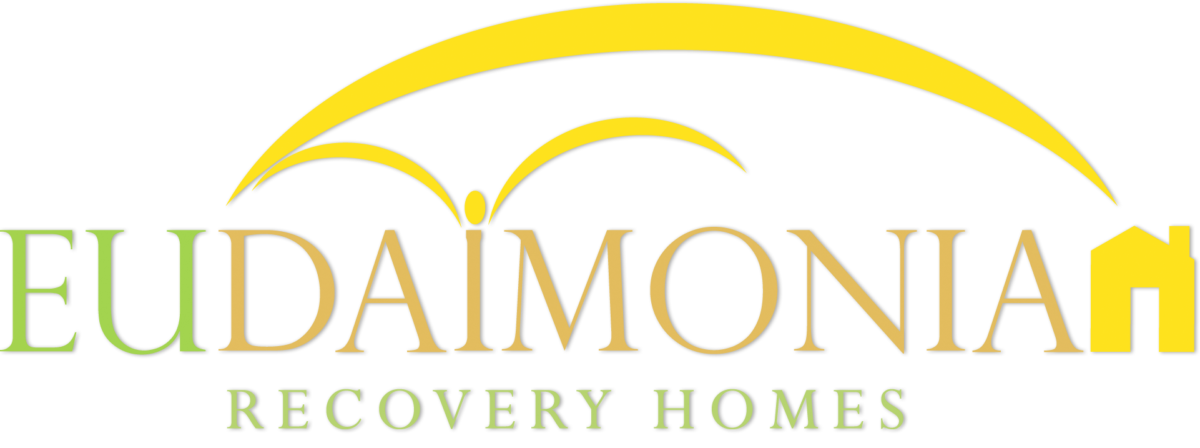
Unfortunately, not everyone’s home environment is a healthy one for sustained sobriety. In some instances, the transition from rehab to life back at home can be made extremely difficult by circumstances that are completely out of your control.
Maybe you have a spouse that is addicted to drugs or alcohol. Maybe your roommates go out binge drinking every weekend. Maybe you live alone and don’t have anyone to keep you accountable. These are all examples of living environments that could easily lead to relapse after you’ve been discharged from rehab.
In many cases, there are many benefits of a sober living environment and transitioning from an inpatient rehab center to a sober living home may be the best way to maintain a healthy living environment while in recovery.
Recovery Living: The Role of Your Living Environment In Recovery
Environmental conditions play a major role in the treatment of drug and alcohol addiction as well as in relapse prevention.1 According to the National Institute on Drug Abuse, stress cues linked to the drug experience, such as moods, people, places, things, and exposure to drugs are some of the most common relapse triggers for drugs and alcohol.1
The Substance Abuse and Mental Health Services Administration (SAMHSA) outlines four factors that are essential for supporting a life in recovery. These factors are3:
- Health – Overcoming your addiction and achieving a healthy body, mind, and lifestyle are the first steps to recovery. In order to maintain this healthy lifestyle, you must make informed choices about your diet, exercise routine, and maintain abstinence from all drugs and alcohol.
- Home – Having a safe, comfortable place to live is key to maintaining your recovery. If you’re too busy struggling to make sure you are safe and stable in a living environment, your ability to focus on your sobriety will wane.
- Purpose – Filling your day-to-day with meaningful activities such as volunteering, helping around the house, working, and spending time with family or friends, are all things that give you purpose. Without it, boredom and depression can easily take over, leading you right back into the drug or alcohol abuse you fought so hard to be free from.
- Community – Healthy relationships that provide support, motivation, and encouragement are essential to maintaining your sobriety. On the contrary, unhealthy relationships that encourage you to forego your sobriety goals and give in to triggers are extremely unhealthy and detrimental to your recovery.
Living in a healthy sober living environment (such as a transitional living home) after drug and alcohol rehab severely decreases your risk for relapse and provides a better opportunity for ongoing success in your sobriety.
What Is a Sober Living Environment?
If you’re new to the recovery scene, you may not know what a sober living environment is. A sober living environment is simply a healthy home environment that is drug and alcohol-free, supportive of your sobriety, clean, and safe.
Unfortunately, many addicts in recovery don’t have a healthy sober living environment to return to after completing rehab because family members, friends, or roommates may be abusing substances within the home. They may also be unsupportive of the person’s recovery goals. Returning to an unhealthy home environment like this will increase a person’s risk of relapse and make it very difficult to remain sober.
Investing in a sober living environment after rehab is a great way to protect your sobriety and it’s one of the primary things a person in recovery needs to be successful in sobriety.
Qualities and Dangers of a High-Risk Environment in Addiction Recovery
While many other factors influence the frequency and likelihood of addiction, such as biology, genetics, and family history, environmental risks also play a large role in the development and persistence of addiction.
For this reason, returning to a high-risk environment after rehab is particularly dangerous for individuals in early recovery—especially those who have not had the chance to achieve a significant amount of time sober yet.
If you are considering returning home after rehab but are unsure if your home is a high-risk environment, ask yourself this: Would I have a difficult time abstaining from drug and alcohol use if I lived back at home? If your answer is yes, then your home may be a high-risk environment.
Some specific qualities of a high-risk environment may be4,5,6:
- Family members regularly drink alcohol or use drugs
- You have easy access to drugs or alcohol
- Family members or roommates are not supportive of your sobriety
- There is violence within the household
- There is physical or emotional abuse within the household
- There is a lack of structure (rules are unclear or encourage use)
- You experience a great deal of family conflict
- There is a lack of community involvement and support
These characteristics are all dangerous risk factors for your sobriety and could cause a relapse. Making the transition out of drug and alcohol rehab can be challenging in the first place, but returning to a dangerous living environment with the qualities listed above can make sobriety nearly impossible, regardless of how determined you are.
Environmental Benefits of a Sober Living Home
If we return to the four major factors that encourage a life in recovery (health, home, purpose, and community) we find that a sober living home provides all of this and more. If you believe returning to your home environment would increase your risk of relapse after rehab, here are several ways transitional housing can provide a healthy environment for recovery.
- Sober living homes provide structure.
A lack of structure, rules, and accountability fuels substance abuse. On the contrary, a home environment with strict rules, people to keep you accountable, and a daily schedule to follow provides the consistency and structure needed to maintain sobriety in early recovery.
- Transitional housing is safe and welcoming.
Safety and stability are basic survival needs and transitional housing offers comfortable living spaces that ensure your safety at all times. Staff and residents are welcoming and accepting of new residents, and they share many of the same life experiences and are all working toward the same goal: lifelong sobriety.
- Residents of sober living houses receive additional recovery support.
Eudaimonia sober living houses provide additional recovery support services such as sober coaches, employment, education and volunteer assistance, and intensive outpatient programs that are designed to help clients maintain their recovery with a peer group and learn and implement relapse prevention skills.
- A transitional living community provides peer support.
Peer support is key to ongoing sobriety and a transitional living community is the best place to find it. Within a sober living home, all of your fellow residents will be traveling the same journey that you are. This provides an opportunity for you to build healthy relationships while also encouraging, supporting, and helping others achieve their continued sobriety.
Personal Benefits of Living Sober
A life of sobriety also has many personal benefits as well, which all contribute to your overall well-being and happiness. Here are just a few of the personal benefits of recovery living.
- Your mind will be clear. With a healthy home environment and a focus on recovery living, your mind will likely be much clearer than it was while you were using.
- Your physical health will improve. If you prioritize your sobriety and invest in a recovery lifestyle and community, you’ll not only feel better, but you’ll also probably look better! Your diet will improve, you’ll have a more structured sleep schedule, your skin will be clearer, and your body will thank you!
- You’ll have more time. One of the most helpful benefits of living sober is all the time you’ll gain! When you were using, you likely spent all or most of your time getting high or drunk. Without drugs and alcohol in your life, you’ll have plenty of time to focus on your recovery, engage with the recovery community, focus on building new relationships, and try out new hobbies.
- You’ll have more fun. When you get sober, your definition of “fun” changes. In a sober living environment, you’ll quickly learn that there are many more ways to have fun that don’t involve drugs or alcohol. And without substances clouding your mind, you’ll be freer to enjoy those activities.
- You’ll save money. Living a life in recovery means you’ll also forego spending money on drugs or alcohol, which will increase the money you can save or put towards your goals, like going back to school or buying a home.
- You’ll have better relationships. Another great benefit of living sober is that you’ll work on building and establishing better relationships with friends and family. Although old, harmful relationships may end, you’ll be much better off with close friends and loved ones who are supportive of your sobriety and actively support it.
Investing in a healthy home environment can provide many personal and environmental benefits, especially if you’re recovering from addiction. As you can see, sober living homes can offer life-changing opportunities for those in early recovery. If you believe your newfound sobriety would be jeopardized by returning to your home, we encourage you to call our admissions team today to learn more about our transitional housing options.
References:
- https://www.sciencedaily.com/releases/2008/11/081114190439.htm
- https://www.drugabuse.gov/publications/drugs-brains-behavior-science-addiction/treatment-recovery
- https://www.samhsa.gov/recovery
- https://www.drugabuse.gov/publications/principles-adolescent-substance-use-disorder-treatment-research-based-guide/introduction
- http://www.mass.gov/eohhs/gov/departments/dph/programs/substance-abuse/providers/prevention/risk-and-protective-factors.html
- http://www.mayoclinic.org/diseases-conditions/drug-addiction/basics/risk-factors/con-20020970

